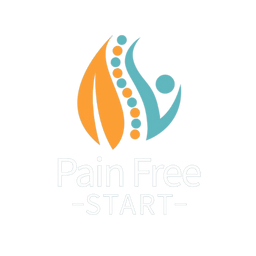Introduction
If you’re living with fibromyalgia, you’ve probably been offered a confusing mix of advice — medications, therapy, maybe even told “it’s all in your head.” It’s frustrating, exhausting, and, unfortunately, common.
But there is good news.
Research is beginning to unravel the science behind fibromyalgia and show us what actually helps. And the answer might not be what you expect.
With an influx in clinic of patient managing this condition and with yesterday marking National Fibromyalgia Awareness day, I thought it would be a great idea to explore this together. I hope you find it useful.
What Is Fibromyalgia, Really?
Fibromyalgia is a chronic condition that causes widespread pain, fatigue, sleep disturbances, mood changes, and brain fog. It affects millions worldwide, particularly older women, and can be incredibly disruptive to daily life.
For years, the condition was questioned and misunderstood. With no clear blood test or scan to confirm a diagnosis, many people have felt dismissed or even shamed for their symptoms.
“This has led to confusion, doubts, dismissal, stigma, and even shaming of those with fibromyalgia.”
— Bernstein, 2016
Is It All in Your Head? Absolutely Not.
Although the exact cause of fibromyalgia isn’t fully known, science now points to a combination of factors — including genetic, psychological, environmental, and nervous system changes.
Recent studies have even found evidence of small fiber neuropathy in people with fibromyalgia — tiny nerve changes that could help explain their symptoms.
“Growing evidence has started to show consistent findings of small fibre neuropathy in those with fibromyalgia.”
— Marshall, 2024
This is important: your pain is real. And now we’re finally beginning to understand why.
So, What’s the Best Treatment?
You’ve likely heard of medications or cognitive behavioural therapy (CBT). These can help manage symptoms, especially around mood and sleep.
But here’s what the research keeps repeating:
Exercise is the most effective treatment for fibromyalgia.
— Andrade, 2020
Not just one kind of exercise — all kinds. Movement in general has been shown to reduce pain, fatigue, and improve quality of life.
The Surprising Power of Strength Training
While aerobic exercises like walking or swimming are helpful, resistance-based exercise (like light weights or bodyweight training) may offer even more lasting relief.
“Resistance-based exercise is likely the most effective type of exercise for reducing pain in both the short and long term for those with fibromyalgia.”
— Rodrigues-Domingues, 2025
This doesn’t mean hitting the gym hard. It means guided, gradual movement designed to rebuild strength and confidence.
But What If You’re Already in Pain?
If the idea of exercising sounds intimidating, you’re not alone. Many people with fibromyalgia worry that movement will make their symptoms worse — and that fear is completely valid.
That’s why it’s so important to start gently and go at your pace. When movement is approached with the right support and structure, it can help you feel better, not worse. Hopefully this blog has led you to feel more confident in the power of exercise to improve and manage your fibromyalgia.

Not Sure Where to Start?
Start with something you enjoy, go for a swim, dance to your favourite songs, tidy up the garden or meet a friend for a walk.
Want to do something useful now?
This FREE Masterclass is designed to “Upgrade Your Body” – together we assess your body, look at how we can make improvements. We then consider how your body could be causing you pain.
This is a free resource — perfect if you want to dip your toe back in, or do something positive straight away.
👉 [Click here to learn more about the masterclass & enrol]
Final Thoughts
Fibromyalgia is real. It’s complex. And it’s been misunderstood for far too long.
But we’re finally seeing research-backed approaches that truly help — and movement, particularly strength-based exercise, stands out time and again.
Start small. Stay kind to yourself. And if you’re ready to explore what might help you feel stronger and more in control, please remember I’m here to support you if you need.
Take care, Helen
Helen Manders BSc (Hons) MCSP HCPC
Chartered Physiotherapist Since 2001
P.S. Struggling with pain or injury? – then I would love to help you. Click here to learn how I can support you further.




